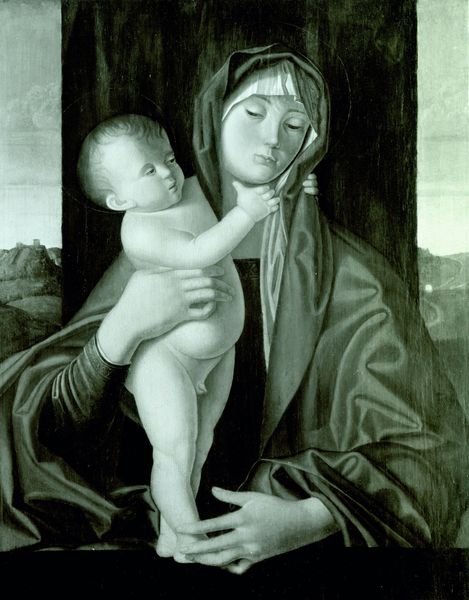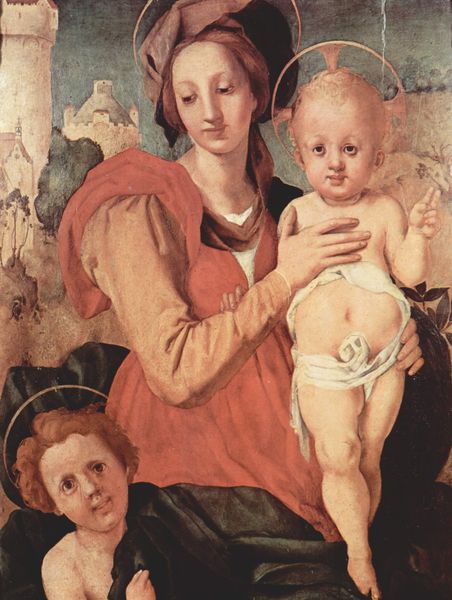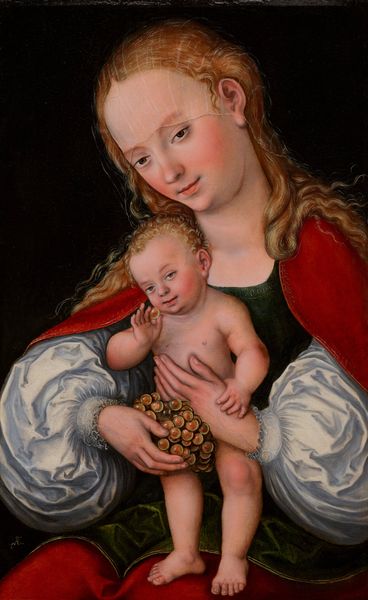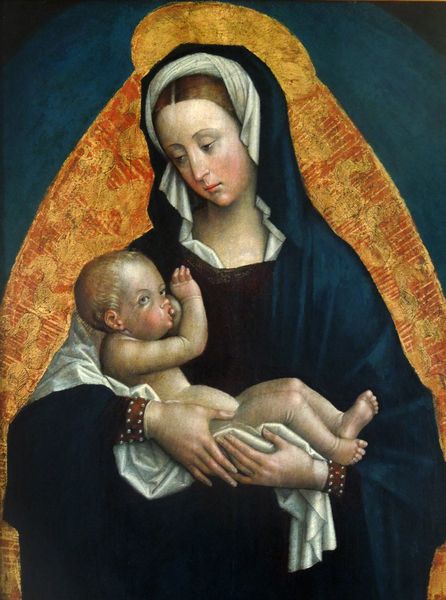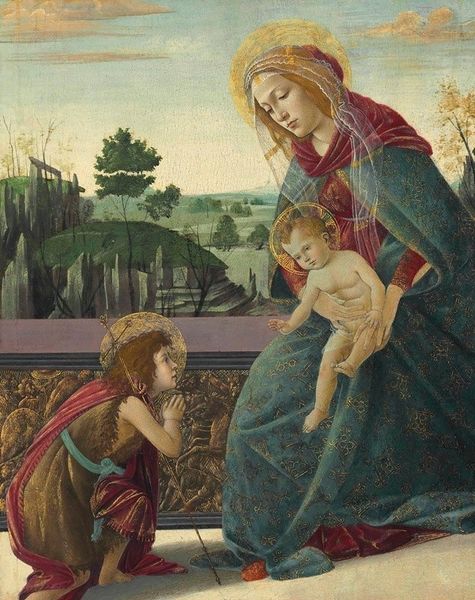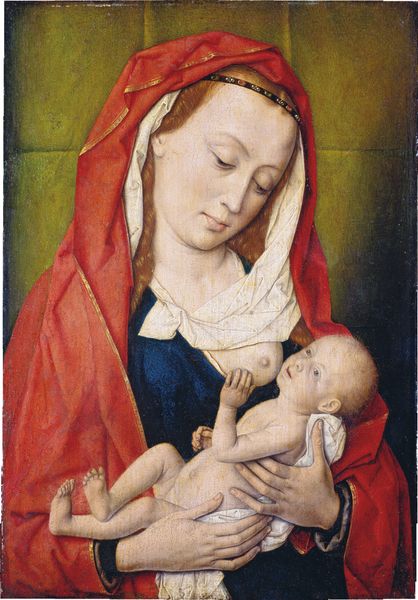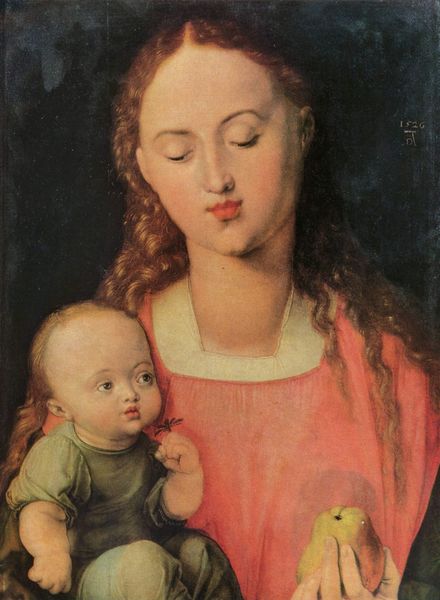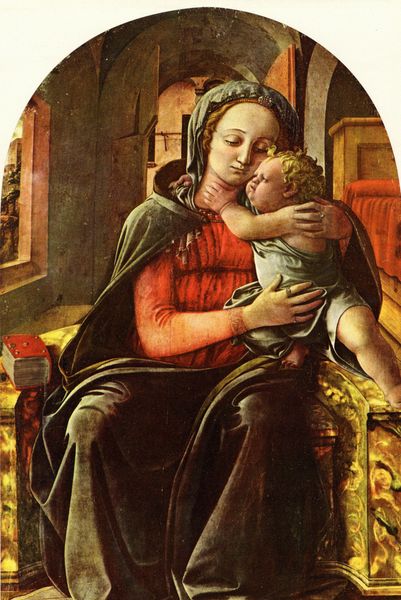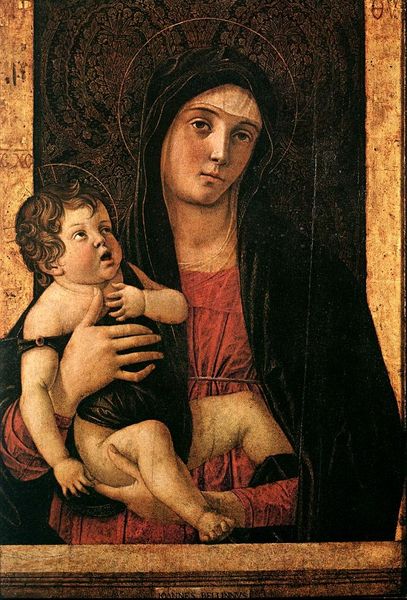
Nativity (detail from the cental right Crucifixion panel of the Isenheim Altarpiece) 1515
0:00
0:00
matthiasgrunewald
Musée Unterlinden, Colmar, France
painting, oil-paint
#
portrait
#
painting
#
oil-paint
#
11_renaissance
#
oil painting
#
child
#
christianity
#
history-painting
#
northern-renaissance
#
portrait art
#
virgin-mary
#
angel
#
christ
Copyright: Public domain
Matthias Grünewald painted this section of the Isenheim Altarpiece, sometime in the early 16th century, with oil on wood. It depicts the Virgin Mary gazing down tenderly at the infant Christ. It's difficult to imagine the painting in its original context. The Altarpiece was commissioned for a monastic hospital in Isenheim, Germany, where the Antonite monks specialized in treating sufferers of the plague and other terrible diseases. In the chapel, the Altarpiece served to console the sick and dying. So, what meaning did the image have for its viewers? Grünewald’s Virgin, in her beauty, offered a vision of hope, and the painting as a whole created a sacred space within the hospital. Understanding the context of the artwork is key. Historians examine the artist's biography, and consult letters, and religious writings from the time. These resources help us interpret the cultural and institutional forces at play in art. By viewing this image in relation to its original function, we can better appreciate the meaning that it held for its intended audience.
Comments
No comments
Be the first to comment and join the conversation on the ultimate creative platform.
